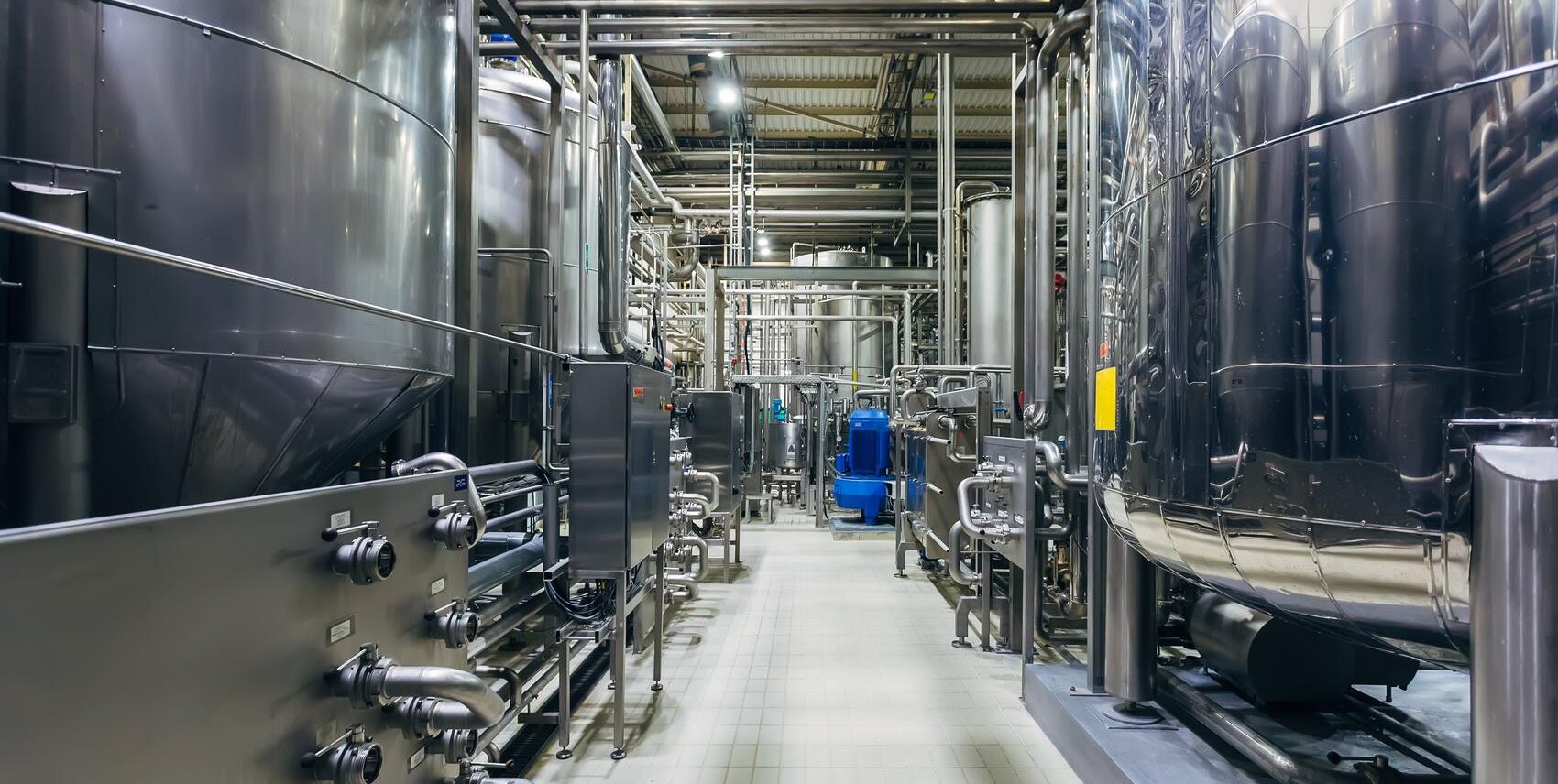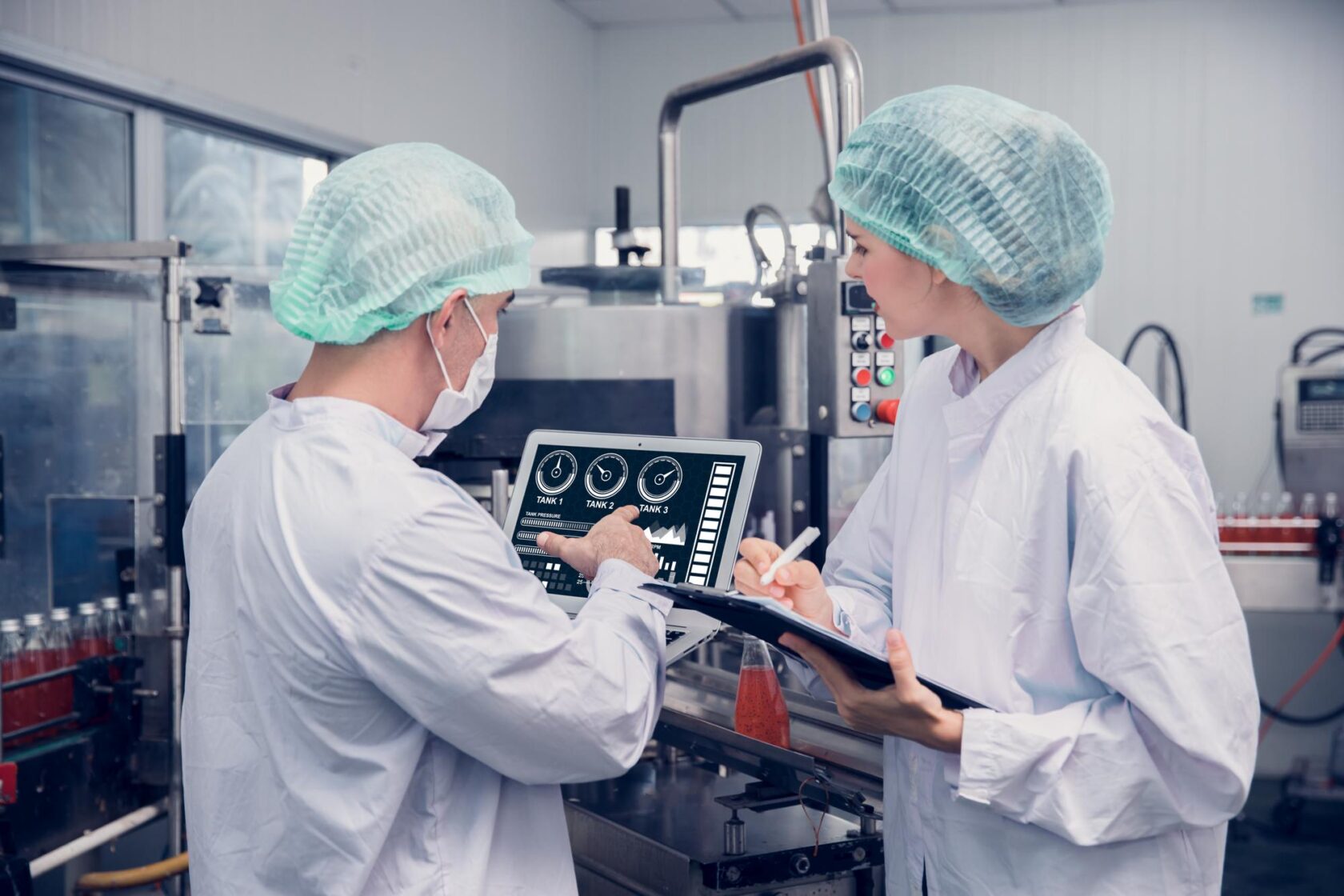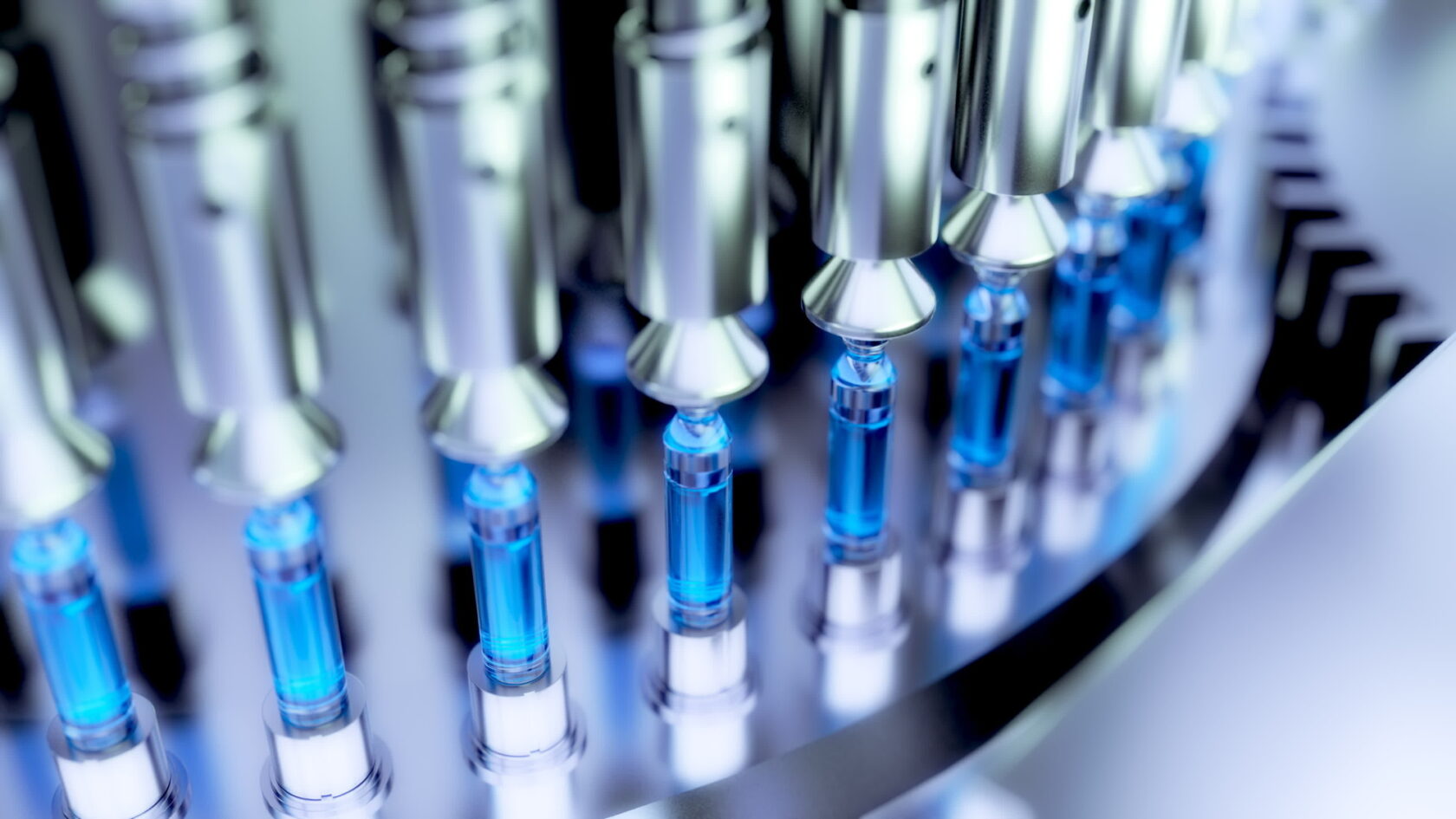News & Insights
5 key considerations for hygienic process design in manufacturing
Hygienic production facilities are among the most expensive types of manufacturing facilities, but the costs of not getting them right can be even higher.

One of the recent trends in factory design is a shift from treating pathogens to preventing them entirely through hygienic process design. In production facilities where the mixing, movement, and processing of ingredients and waste pose significant challenges, product contamination by microorganisms presents a pervasive risk.
Whether you are planning a new facility or making modifications to an existing one, here are 5 key considerations Salas O’Brien helps clients address in hygienic process design for manufacturing:
Cleanability
Every piece of a hygienic process must be designed for two scenarios: production of the product and cleaning and sanitization.
Cleaning and sanitation may be either clean/sanitize-out-of-place (COP/SOP) or clean/sanitize-in-place (CIP/SIP). COP/SOP systems are designed to allow for manual cleaning and sanitization with disassembly. COP/SOP execution can work, and it is a common practice in a number of industries but must be managed effectively.
CIP/SIP systems are designed to allow for automated cleaning of equipment without disassembly. This is the preferred equipment design option from a microbiological point of view as it reduces the risk of any subsequent contamination of the cleaned and sanitized modules as they are reinstalled into the equipment system as opposed to clean-out-of-place (COP). This reduces the risk of contamination by minimizing the need for human intervention in the cleaning process. CIP/SIP equipment is typically designed to be easy to clean and sanitize, with smooth, non-porous surfaces, and the use of materials that are resistant to corrosion, wear, and chemical damage.
This tension between the two above scenarios needs creates complexity. For example, many foods have ingredients with high viscosity that need to be pumped at a slow flow rate (low shear), but the water required for cleaning has a low viscosity. (Think about the difference between a thick syrup or water-based products.) This means that pumps, valves, and pipes must be designed for two very different operating cases.
In addition to accounting for different fluid dynamics, hygienic process design addresses the cleanability of both “product contact” and “non-product contact” surfaces. For example, removing food residue is holistic from the insides of pipes and tanks to every surface surrounding them. A good analogy is cleaning a kitchen after making a meal. Not only would you have to clean your cutting board, pans, dishes and counter after each meal, but also the inside of the oven, refrigerator, and dishwasher, along with the floor, ceiling, and walls.
Here are a few key factors hygienic process designers consider in a system:
Product contact cleaning considerations
- Pipe slope for full drainage (1 to 2% based upon product viscosity)
- Preventing ‘dead legs’ or portions of piping where there is no fluid flow
- CIP/SIP circuit design (flow, time, temperature, chemicals)
- Material selection (316L stainless steel is the most common for metals, non-metals include FDA-approved gaskets and elastomers)
- Level of surface finish (polished and smooth is easier to clean and there can be no crevices)
Non-product contact cleaning considerations
- Equipment must be elevated off the ground so it can be cleaned underneath
- Sloped floors for optimal drainage and suitable for washdown
- Cleanable surface finishes for walls and ceiling
- Sloped tops for electrical panels to prevent dust accumulation
- HVAC designed to maintain temperature, humidity, and pressurization to prevent bacterial growth
When designing, Salas O’Brien uses 3D models of facilities to run simulations for both production and cleaning processes to validate design concepts.
Hygienic zoning
Hygienic zoning creates different zones within a manufacturing facility based on the level of cleanliness required for each area. This can help minimize the risk of contamination by preventing the transfer of contaminants from one area to another. Hygienic zoning typically involves establishing physical barriers between different zones (e.g., warehouse vs. open filling operations) and implementing appropriate procedures for cleaning and sanitizing equipment and personnel moving between zones.
Because many pathogens are transferred by air, it also includes HVAC zoning to leverage differential pressure. Air always flows from high to low pressure, so critical areas are maintained at a high air pressure, and less critical areas are maintained at a lower air pressure.
Keep in mind that any part of the process in which open produce is exposed to an open environment, such as filling and assembly operations, will need to be at a higher pressure than a protected area where product is handled within closed containers. Conversely, an area where no product is exposed, such as product storage, would be designed to have the lowest pressure.
This type of design requires tight coordination across disciplines and benefits from multi-disciplinary engineering firms where hygienic process design, architectural, mechanical, electrical, plumbing, structural, and automation systems are designed together in-house.
Product recovery
Consider that an 800-ft pipeline transferring product from one place to another will be full of product when the transfer is done. The system needs to be cleaned to prevent contamination, but it can be done in a way that recovers the remaining product.
Product recovery systems, also known as pigging systems, can be used to recover product from pipelines, reducing the need for manual intervention and minimizing the risk of contamination.
Pigging systems work by using a “pig,” a device that can be inserted into a pipeline and pushed through to recover any remaining product. These systems are designed to be highly efficient, with minimal product loss during the recovery process.
One of the key benefits of product recovery systems is that they can help reduce waste and increase yield. By recovering product that would otherwise be lost during the manufacturing process, companies can maximize their productivity and reduce costs.
Automation to reduce contact
Automation can help reduce the risk of contamination by minimizing the need for human intervention in the manufacturing process (Reference the CIP/SIP vs. COP/SOP discussion). For example, automated systems can be used to transfer materials and products between different pieces of equipment, or hygienic zones reducing the risk of contamination through contact with human operators.
Mixproof valves, which allow the operator to press a button to open a valve, can be a more hygienic solution than manually hooking up a hose or pipe; and automatic bag unloading—while more expensive than having personnel open and dump bags—can protect the overall production line.
Regulations compliance
Most manufacturers are keenly aware of compliance issues. The key is selecting the right individuals to sort through the array of information and to ensure the correct regulations are being applied.
Here are some of the major agencies and their roles:
- FDA: The US Food and Drug Administration (FDA) ensures the safety, effectiveness, and quality of drugs, medical devices, and other products. FDA 21 CFR 210 covers a wide range of topics related to food and drug manufacturing, including facility design and maintenance, equipment cleaning and maintenance, personnel qualifications, raw material testing and release, process validation, and recordkeeping.
- FDA 3A: The FDA also regulates the safety and quality of dairy products. The FDA 3A standards cover a wide range of equipment used to process dairy products, including milk storage tanks, pasteurizers, homogenizers, separators, and filling machines.
- China CSAR: The China Compulsory Certification (CCC) is a mandatory certification system for products sold in China. Compliance with China CSAR regulations is essential for companies involved in the manufacture and distribution of products sold in the Chinese market, including cosmetics and other consumer products.
- EHEDG: The European Hygienic Engineering & Design Group (EHEDG) is an organization that provides guidance and support for the hygienic design of equipment and processes.
- ISPE: The International Society for Pharmaceutical Engineering (ISPE) is a global organization that provides guidance and education to professionals in the pharmaceutical industry.
Most regulatory agencies offer educational opportunities that can help industry professionals stay informed about changes to regulations and industry trends, enabling them to maintain compliance and ensure the safety and quality of their products.
The cost of hygienic production facilities
Hygienic production facilities are among the most expensive types of manufacturing facilities, but the costs of not getting it right can be even higher. Product recalls and reputational damage can result in significant financial losses and can even put a company out of business. In addition, consumers do not want any risk from their products, and product recalls are typically posted across the web the same day as the event, giving no time for response.
Working with the right consulting engineering team can help control costs through the following strategies:
Right-sizing equipment
One way to control costs is by right-sizing equipment, which involves using efficient engineering calculations and 3D modeling to ensure that product specifications are exact and that manufacturers only purchase necessary equipment. This can save significant amounts of money on oversized or unnecessary equipment.
Efficient design of utilities
Utilities such as steam, water, and air are essential for hygienic manufacturing processes but can be expensive to operate. Consulting engineering firms can design and specify utilities systems that are efficient and cost-effective. This can include optimizing sustainability options, such as the use of energy and water, reducing waste and emissions, and minimizing maintenance costs over the life of the systems. Continuous commissioning services can be an asset to maintaining optimal use.
Firm-wide consulting
Firm-wide consulting is another way to manage costs in hygienic manufacturing. Manufacturers can cross-pollinate best practices and innovation across regions by building a long-term relationship with a consulting engineering team that serves all of a company’s facilities. For example, if a facility in Toronto has just installed something that is working well, it might be relevant to a facility in Richmond. This overview can provide a high degree of cost efficiency, enabling manufacturers to optimize their operations across multiple locations.
Need an engineering consultant who specializes in hygienic design?
Effective hygienic process design requires deep experience in equipment design, regulations, product recovery systems, automation, and hygienic zoning. By implementing these measures, manufacturers can improve product quality and safety while also minimizing the risk of contamination and reducing the likelihood of costly product recalls.
Salas O’Brien is currently partnering with a client who is doing some truly innovative work turning sulfuric acid hazardous waste from manufacturing into a usable chemical compound for water treatment and creating clean drinking water in the process. We are executing a complete digital modernization for their operations, using data analytics, automation, and AI to drive insights and inform decision-making. As a result, we are helping them turn information into outcomes, optimize processes, improve efficiency, and reduce costs.
Contact Salas O’Brien to discuss your process design needs.
For media inquiries on this article, reach out to Stacy Lake.

Dennis McCullough, MS, CPP
Dennis McCullough is a highly respected leader in hygienic design with over 45 years of experience providing expert guidance to clients in a range of industries. From consumer products to food and beverage, pet care, cosmetics, and protein companies, Dennis has helped clients to develop innovative solutions for their manufacturing and processing facilities. He currently serves as a Senior Vice President at Salas O’Brien. Contact him at [email protected]

Daniel Strohminger, PE
Daniel Strohminger is a seasoned expert in hygienic design, chemical process, and process engineering. With a portfolio that includes well-known producers of foods and beverages, infant products, and pet care, he brings extensive knowledge, experience, and practical solutions to his work. He serves as a Vice President at Salas O’Brien. Contact him at [email protected].


